Among the most enigmatic forms sinceantiquity, the labyrinth has often fascinated artists and writers, who in turn have reinterpreted it to give metaphorical meaning to this ancient symbol. Jorge Luis Borges (Buenos Aires, 1899 - Geneva, 1986), one of Argentina’s greatest literary figures, dedicated many of his stories to the theme of the labyrinth, to express, for example, the concept of the universe or of human knowledge, but also of something intricate and tortuous to be solved, as a kind of message to be deciphered. This is the case with The Garden of Forking Paths, a short story by Borges that inspired the construction of a real labyrinth in the Venice lagoon, on theisland of San Giorgio. This is the Borges Labyrinth, which opened to the public for the first time in 2021, starting in June of that year (ten years after its creation), and which until then was only visible from above, from the terrace of the Centro Vittore Branca, the residential humanities hub dedicated to the well-known Italianist, of the Giorgio Cini Foundation.
The Garden of Forking Paths tells the story of Chinese professor Yu Tsun, a spy in the service of Germany living in England during the First World War. Unable to communicate the location of the British artillery to his German superiors because he is discovered and pursued by Captain Richard Madden, the professor-spy devises a plan, but needs a person who can enable him to pass on the information, namely Chinese language and literature scholar Stephen Albert. At the same time, the professor finds himself reflecting on his past and his ancestor Ts’ui Pen, who was famous for writing a novel and building a labyrinth that, however, no one has ever been able to find. It turns out that Albert studied Ts’ui Pen’s work itself and deciphered the riddle: book and labyrinth are the same work, The Garden of Forking Paths. Yu Tsun catches up with Albert and kills him by shooting him. The news of the murder comes out in the newspapers and only at the end is the motive for the murder discovered, as the message is deciphered in Germany: the British artillery is located in a town called Albert itself.
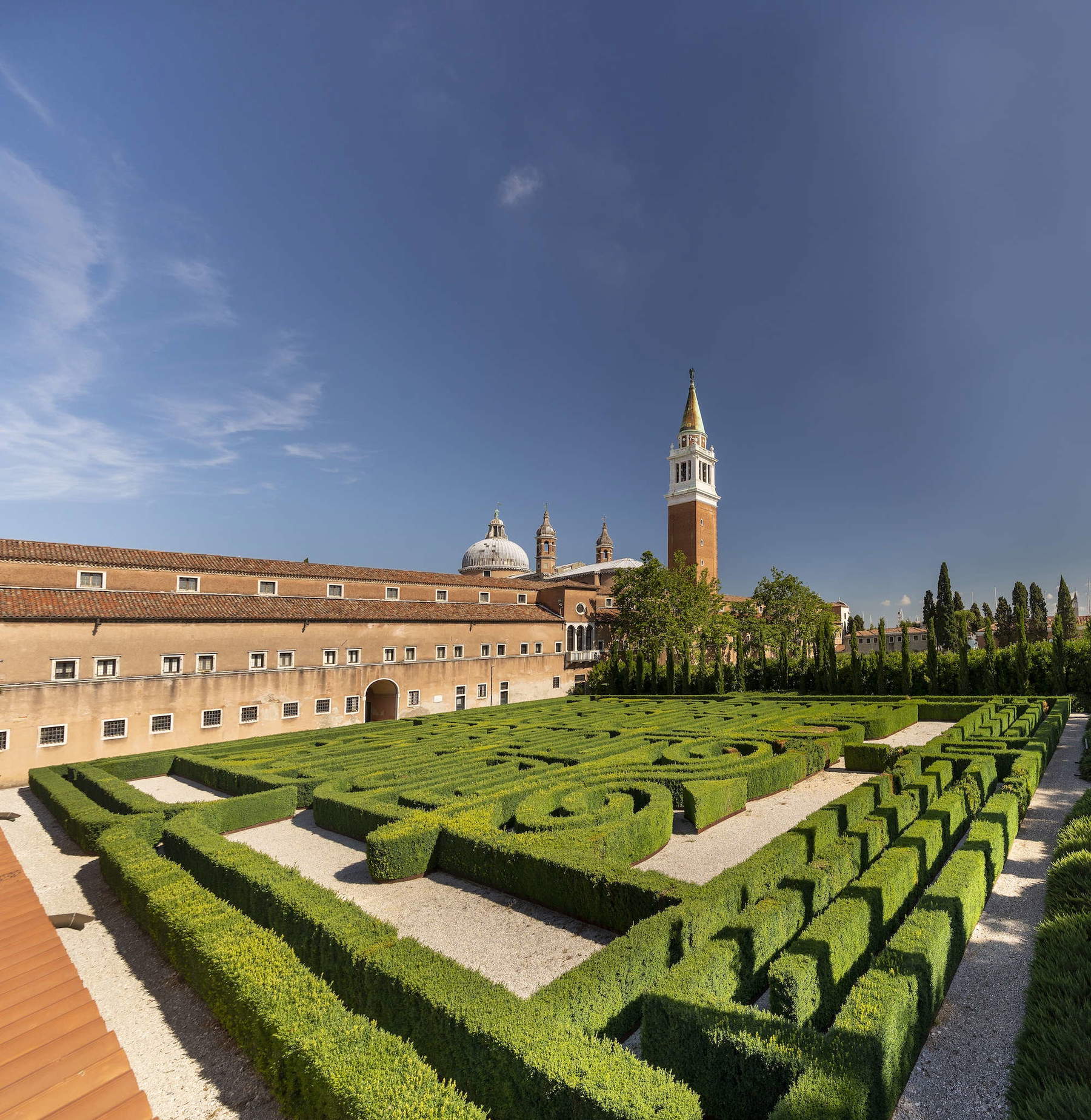
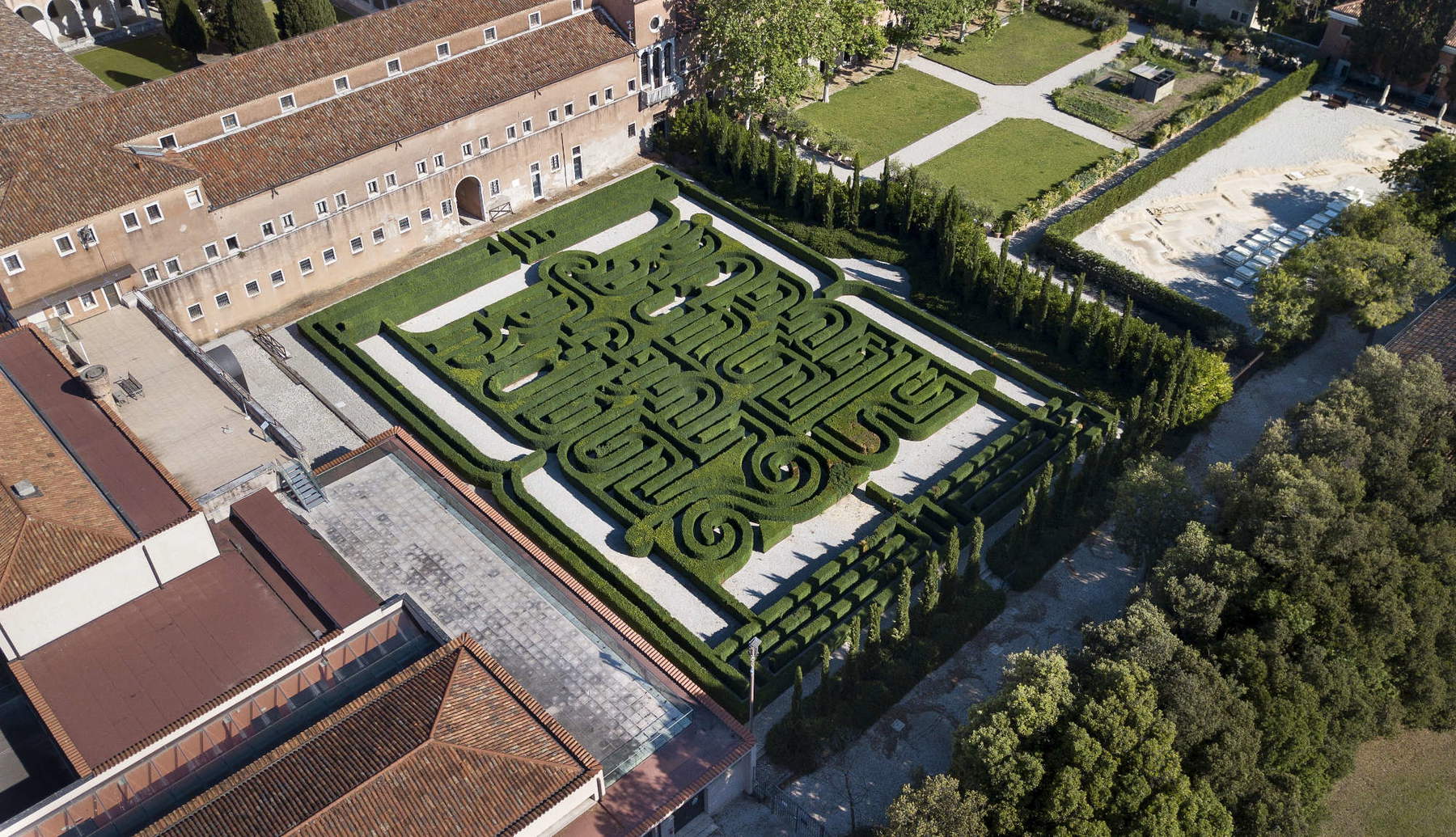
But what links Borges, the labyrinth and Venice so much that led the Giorgio Cini Foundation to decide to build a labyrinth dedicated to the Argentine writer on the island of San Giorgio, where it is based? The labyrinth was built in 2011 by the Foundation, but its design actually dates back to the 1980s. “The design of the labyrinth is a tribute that British diplomat and labyrinth designer Randoll Coate made to Jorge Luis Borges,” explained the Foundation’s Secretary General, architect Renata Codello. "Made in the 1980s, the project was inspired by Borges’ short story The Garden of Forking Paths: in fact, the labyrinth is in the shape of an open book and inside it encloses various symbols that refer to the narrative. Following the Argentine writer’s death,“ the architect continues, ”María Kodama Borges, the poet’s widow and president of the international foundation of the same name dedicated to him, decided to have the project realized. In 2003, the design first became a real labyrinth in Mendoza, Argentina. María Kodama, however, wanted to make a version in Europe as well, and her dream was that, given the book-like shape, it would possibly be placed near a major library. After much research, when musician Pedro Memelsdorff, director of the Early Music Seminars Egida Sartori and Laura Alvini of the Cini Foundation, suggested that she present the idea to the Giorgio Cini Foundation to place it near the Manica Lunga Library on the Island of San Giorgio Maggiore, the project was welcomed with great enthusiasm. In 2011, the labyrinth was completed and officially presented on the occasion of the twenty-five-year anniversary of Borges’ death."
Entering the Borges Labyrinth brings one into contact with the writer’s fantasy world. “The 3,200 boxwood plants that constitute it (a linear kilometer) conceal elements of a unique vision of time, history and very dear to Borges such as the hourglass, the question mark, the tiger, the name Jorge Luis, and the initials of his wife María Kodama. Incredible and admirable especially from above is the mirror effect: the hedges compose in the two opposite directions the name Borges, as if it were ideally written on the pages of this book,” adds Renata Codello. As per a proposal that was well received, the labyrinth is located at the foot of the extraordinary 130-meter-long Manica Lunga Library, a former dormitory of Benedictine monks, designed by Michele De Lucchi.
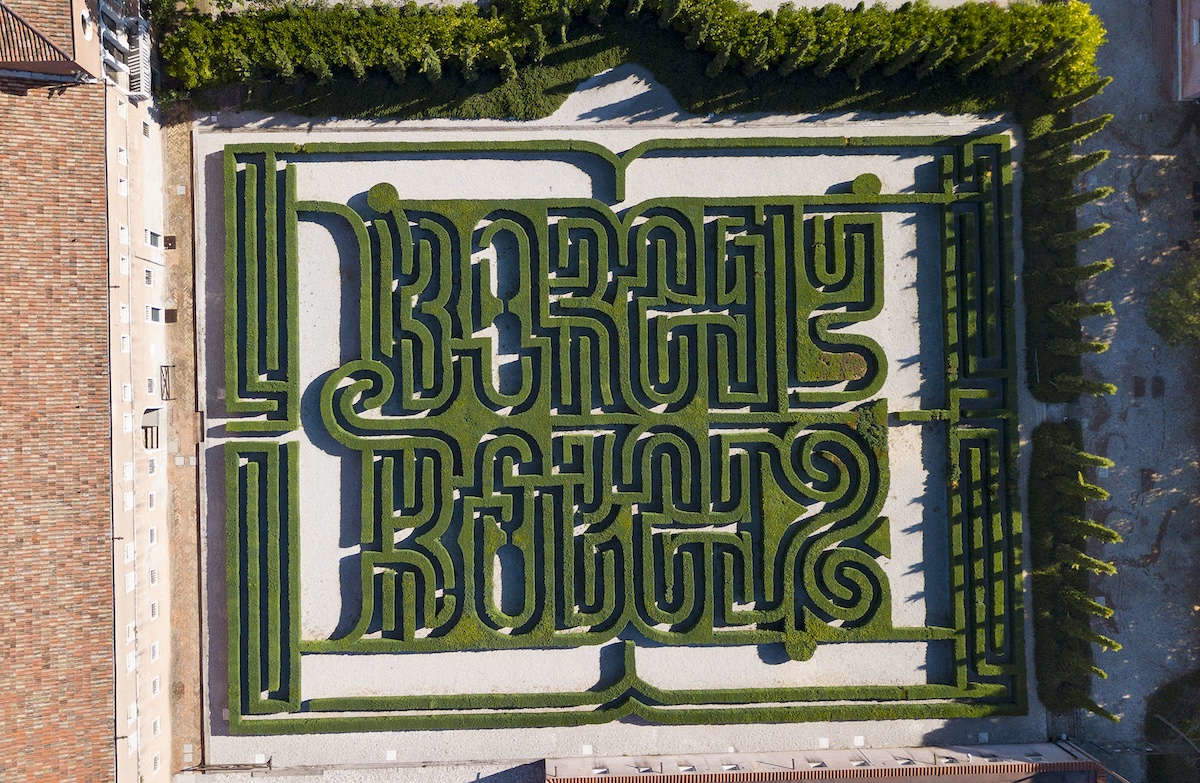
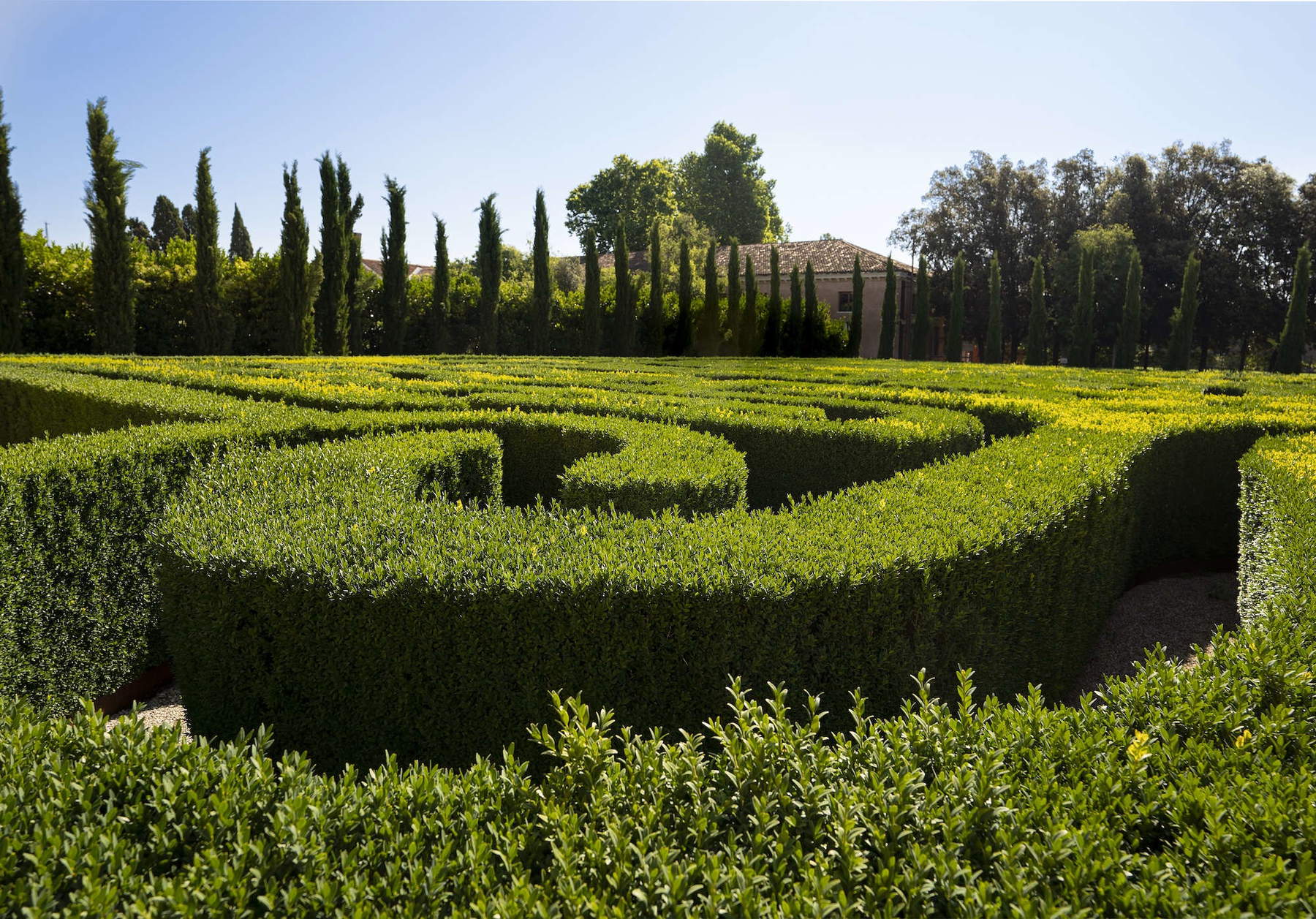
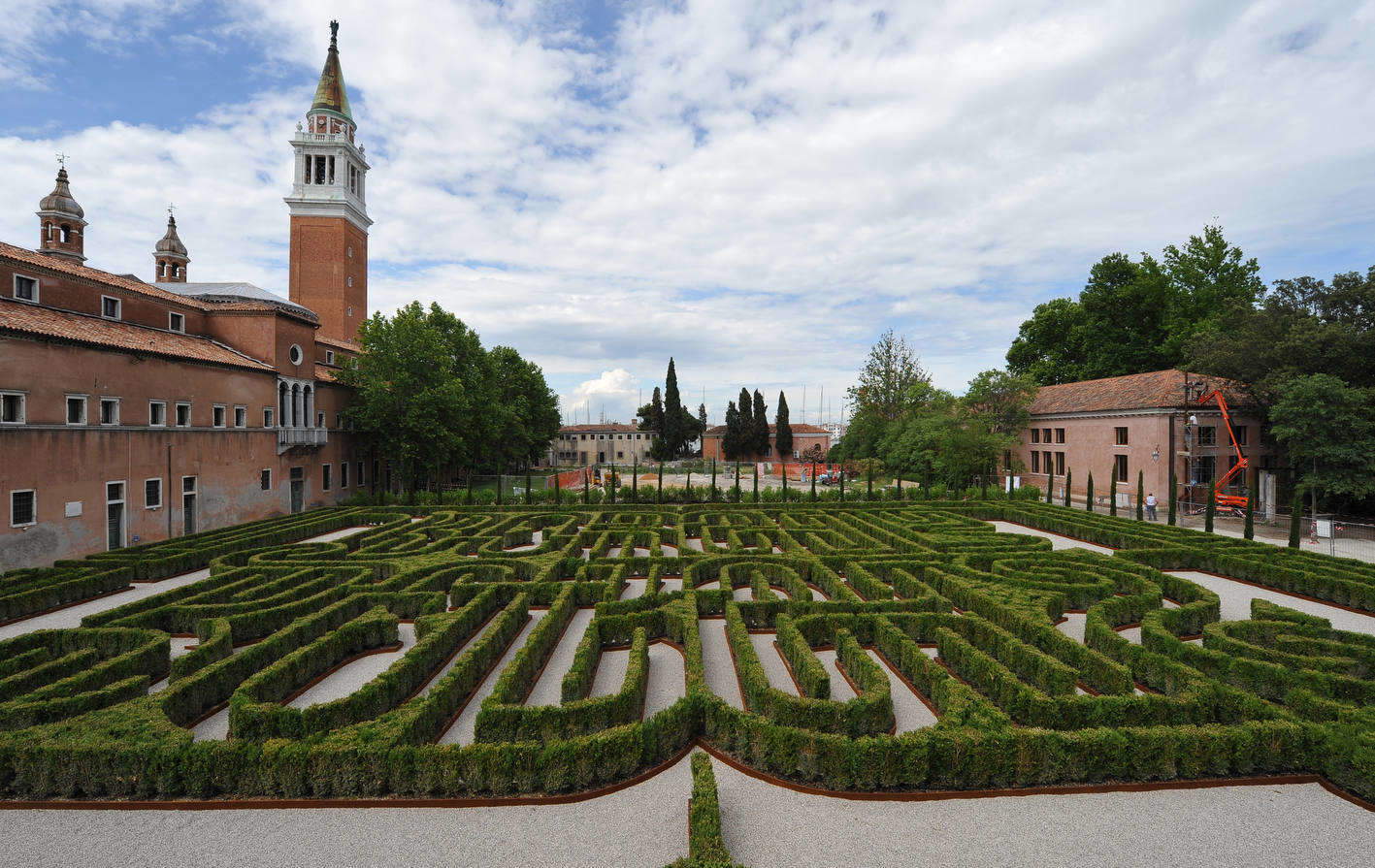
When construction was complete, Borges’ widow, María Kodama, declared enthusiastically, “For me this is a wonderful project, it is a magical gift that Randoll Coate, an English labyrinth architect whom Jorge Luis met many years ago in Argentina, gave me after his death. This labyrinth was made here in Venice, because Venice was one of my husband’s most beloved or among the most beloved cities, it is a labyrinth city, it is a unique city of a subtle and wonderful delicacy and complexity, with an equally wonderful history.”
On the occasion of the tenth anniversary of its construction, the thirty-fifth anniversary of Borges’ death, and the seventieth anniversary of the Cini Foundation, the Borges Labyrinth has been made accessible to the public for the first time (by reservation through visitcini.com), with a tour route curated by the D’Uva company of Florence. The walk inside the labyrinth is also accompanied by music: a suite of more than fifteen minutes specially composed by Antonio Fresa, performed and recorded with the La Fenice Theater Orchestra, entitled Walking the Labyrinth, which visitors can listen to in the multilingual audio guides. “The decision to combine visits with music,” Codello stressed, "began successfully last year with another important project on the island of San Giorgio Maggiore: the Vatican Chapels. Ilaria D’Uva, whose company manages the system of guided tours on the Island of San Giorgio Maggiore, commissioned musician Antonio Fresa to compose original pieces inspired by each chapel. And what better continuation could this project have than with the labyrinth? Antonio Fresa thus composed a new suite. The music accompanies visitors along the walk through the winding labyrinth, amplifying the magic of the experience. Listening is individual, thanks to the use of multilingual audio guides, thus making each person’s experience unique."
Between the “forking paths,” the symbols related to the Argentine writer’s universe and the evocative music that rings in the ears to lead the visitor on this fantastic journey, it will be unforgettable and evocative to enter the labyrinth and then find the way out, the only possible way to solve the challenge with oneself.
Warning: the translation into English of the original Italian article was created using automatic tools. We undertake to review all articles, but we do not guarantee the total absence of inaccuracies in the translation due to the program. You can find the original by clicking on the ITA button. If you find any mistake,please contact us.